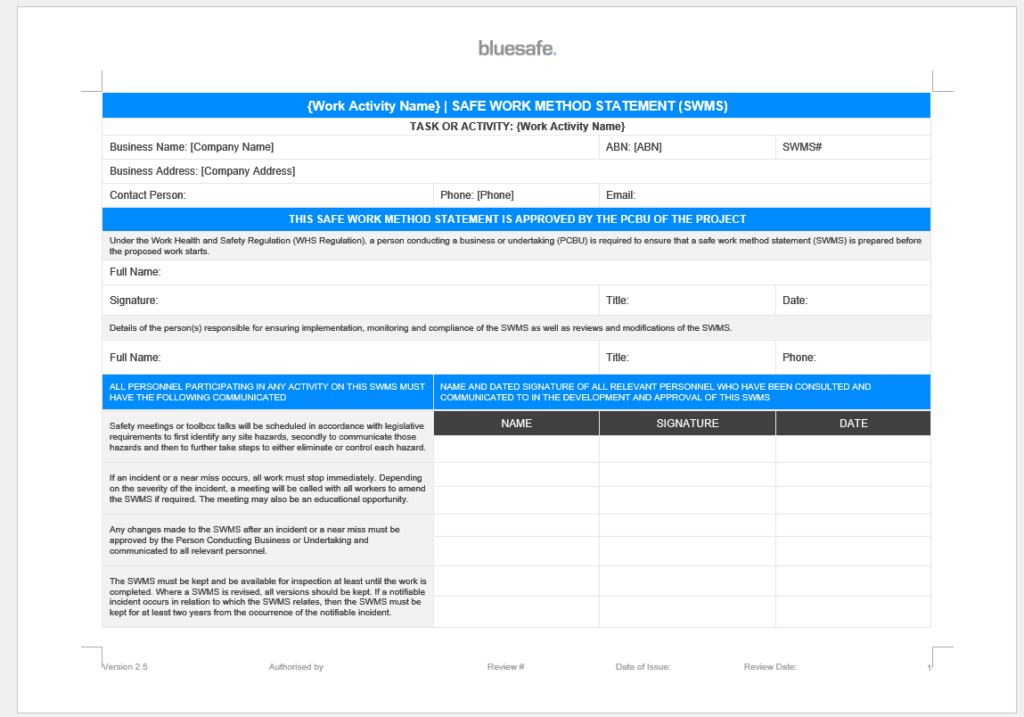Tips for Creating a Risk Assessment Safe Work Method Statement
It is vital to ensure the safety of workers and prevent workplace incidents. One crucial tool in achieving this goal is creating a well-structured Risk Assessment Safe Work Method Statement (SWMS).
Here are some valuable tips to help you develop comprehensive and effective SWMS:
1. Understand the Task at Hand: Before diving into writing a SWMS, make sure to fully comprehend the task or job activity that needs to be assessed. Conduct research, talk to experts, and consult relevant resources to gain a thorough understanding.
2. Identify Potential Hazards: Once you have a clear picture of the task, start identifying potential hazards. Consider physical, chemical, ergonomic, and psychosocial hazards that may arise during the job. Document all identified risks systematically.
3. Assess Risks: Evaluate each hazard’s likelihood and severity, and rank them based on their risk level. Remember to consider the workers’ exposure time, frequency, and potential consequences. This step helps prioritize focus areas for risk management.
4. Develop Control Measures: After identifying and ranking risks, determine appropriate control measures to minimize or eliminate these hazards. Focus on implementing the highest level of controls possible, such as elimination or substitution, before relying on administrative or personal protective equipment controls.
5. Consult with Workers: It’s crucial to involve workers who will be performing the task while developing the SWMS. Seek their input regarding potential hazards, current work practices, and suggestions for improvement. This collaborative approach promotes ownership and increases engagement in risk management.
6. Document Procedures: Clearly document the step-by-step procedures to be followed for completing the task safely. Ensure that the instructions are easy to understand and provide specific details on how to implement the control measures identified earlier.
7. Specify Safe Work Practices: Outline the safe work practices that need to be followed during the task, including the use of personal protective equipment, adherence to established procedures, and any required training or certifications for workers involved.
8. Asses Emergency Response: Consider potential emergency scenarios related to the task and outline emergency response procedures in the SWMS. Include details like evacuation plans, emergency contact information, and any specialised training required.
9. Review and Update: SWMS should never be static documents. Regularly review and update them as necessary to ensure they remain relevant and effective. Take into account any changes in legislation, equipment, or work processes that may impact the safety of the task.
10. Communication and Training: Effective communication is vital when it comes to implementing SWMS. Ensure all workers involved in the job have access to the document, comprehend its content, and receive appropriate training on its implementation.
Remember, creating a Risk Assessment SWMS is not just about ticking boxes; it’s about proactively identifying and managing risks to create a safe working environment. By following these tips, you can develop comprehensive SWMS that prioritise safety and protect both workers and the organisation.
Regards,
![]()







